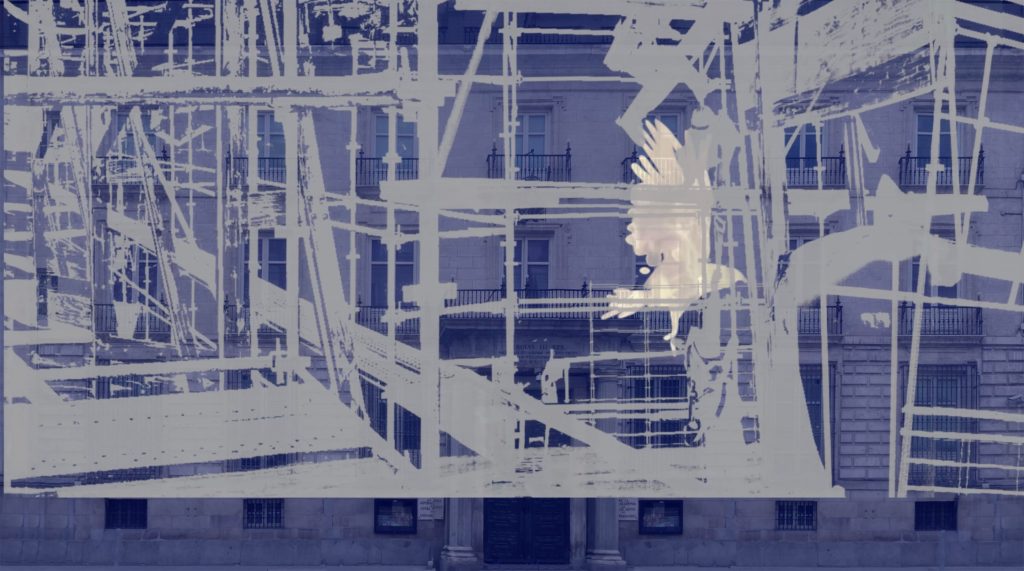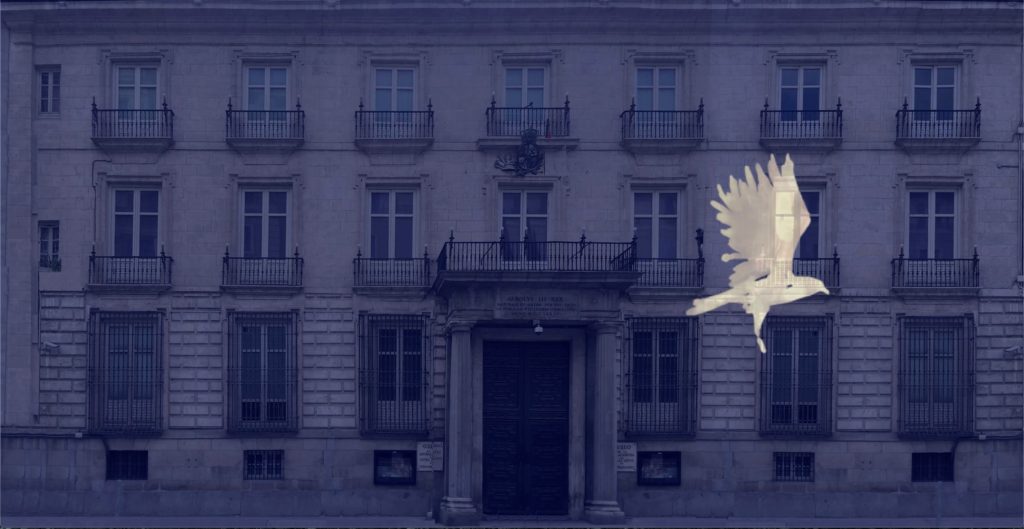Past editions/2021/Flying Folly
Flying Folly
Ángel Haro - Visual artists in the light programme
Spain
29, 30 and 31 October
From 8pm to midnight
San Fernando Royal Academy of Fine Arts
Calle Alcalá, 13



This piece forms part of the Contemporary Invaders project commissioned by Julieta de Haro, which recognises the value that new spaces hold for transformation, experimentation and conquest. Creators become invaders of the façades of some of the capital’s most emblematic buildings. The cultural heritage of these structures — and the life they house within — expands symbolically outward from a contemporary perspective, in an allegory of both the past and the present.
With this project, the artist uncovers a part of the symbolic content the San Fernando Royal Academy still conserved to this day: Goya’s etchings. His so-called Disparates, or Follies, are the painter’s most enigmatic and cryptic works to be housed at this institution. Ángel Haro is an artist who is intimately familiar with the works and brushstrokes of this painter, evident in his audiovisual production of twelve of Goya’s Black Paintings. In this installation, the front of the building will be Haro’s white canvas. Upon it he sketches a sequence, his colour palette reminiscent of Goya’s etchings.
Ángel Haro’s Flying Folly is brought to life by a large bird that soars across the building’s façade in search of meaning and texture, pursuing a wide-open space. He begins his process by sketching by hand. Next, he digitises his drawings and adds movement to the various sequences of images, creating a connection between Goya and his contemporary vision.
With the collaboration of:
Location
San Fernando Royal Academy of Fine Arts: the Palace of Goya, this Baroque building designed by José Benito de Churriguera, became the seat of the Royal Academy in 1773, with a view to bringing neoclassical order to the institution. Architect and academic Diego de Villanueva, who was in charge of the reform, placed a Doric-style door at its entrance.















